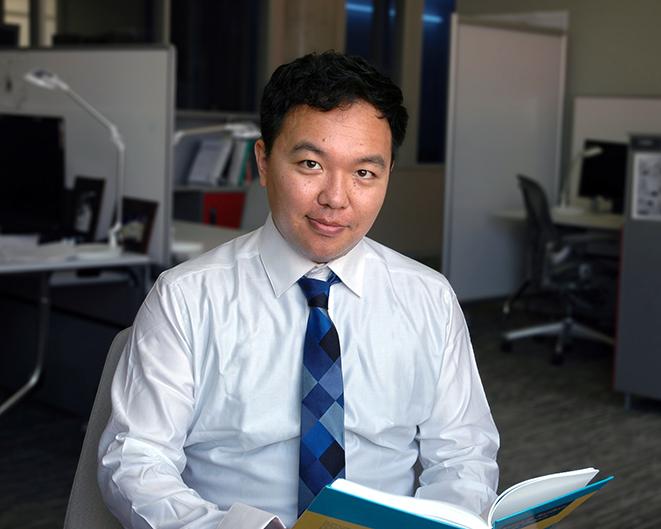
The University of Texas at Austin has committed resources to expanding faculty and research strength in the increasingly important field of machine perception. Machine perception, a broad concept that actually incorporates multiple disciplines such as natural language processing and computer vision and underlying machine learning technologies, is a branch of artificial intelligence that focuses on how computer systems intake information, particular in ways that emulate human behavior. Qixing Huang, one of the first of these new faculty members, brings a unique perspective on how to integrate computer vision techniques more closely with the field of 3-D graphics.
Huang's work involves scanning physical objects in order to transform them into 3-D models on a computer. In order to take a 3-D object and turn it into a 3-D computer model, all angles of the object must be captured with 2-D images, which are then fused together to give a complete picture of the object. According to Huang, this is one of the more difficult challenges associated with capturing 3-D objects directly from the physical world.
Fortunately, the field of 3-D graphics could get a little help from another field of computer science: artificial intelligence.
“When you look at the geometry of an object from a particular angle, you only see a partial object, you don’t have a complete knowledge of that object,” he said. “To really acquire a 3-dimensional geometry, you have to look at that from multiple angles. How to fuse the information acquired from multiple angles into a completed geometry is a very interesting problem that has been studied for a very long time and is still ongoing.”
The abundance of data from the internet has recently improved 3-D computer modeling. When Huang started doing this research ten years ago, he only had a few 3-D models on his computer, and he said research was focused on processing and improving a single object at a time. Now, crowd-sourcing 3-D modeling data from the internet that people share led to millions of models online on websites such as 3D Warehouse.
“Now we have big data, which is new,” he said. “We can think about how to leverage big data to develop data-driven algorithms to acquire, process and analyze 3-dimensional models. How can we manage this data to solve existing problems, or even create new problems to work on?”
He says these big data solutions can also be applied to other disciplines, such as computational biology and bioinformatics, where scientists can solve traditional problems in biology by using computer science techniques such as algorithms and simulations with lots of data.
“Because of this big geometric data, we may open new machine-learning problems that interest people from theoretical computer science and theoretical machine-learning divisions to work on.”
He says that an alternative solution is using robotics and artificial intelligence to improve the process, such as creating moving robots with sensors attached in place of handheld 3-D cameras to capture the environment.
Huang wants to work across disciplines between the fields of robotics and graphics. An application of this cross-disciplinary work is being able to capture a 3-D object or environment by writing text descriptions instead of clicking buttons to control the scanning mechanism.
“There are a few key problems in different areas of computer science, but it turns out that the boundary between different disciplines becomes blurrier and blurrier,” he said. “Right now, my major focus is on the intersection of graphics and artificial intelligence.”
While at UT, one of Huang’s research goals is to pursue this intersection between AI and graphics, and he wants to develop new classes at UT for this interdisciplinary line of research. Huang said he is enjoying UT so far and looking forward to collaborations, such as in the AI Lab, within and outside of UTCS to further his research goals.
“This is a very good and comprehensive university,” he said. “If you want to do something, you can always find experts in this domain. That is the most amazing part of being at UT.”



